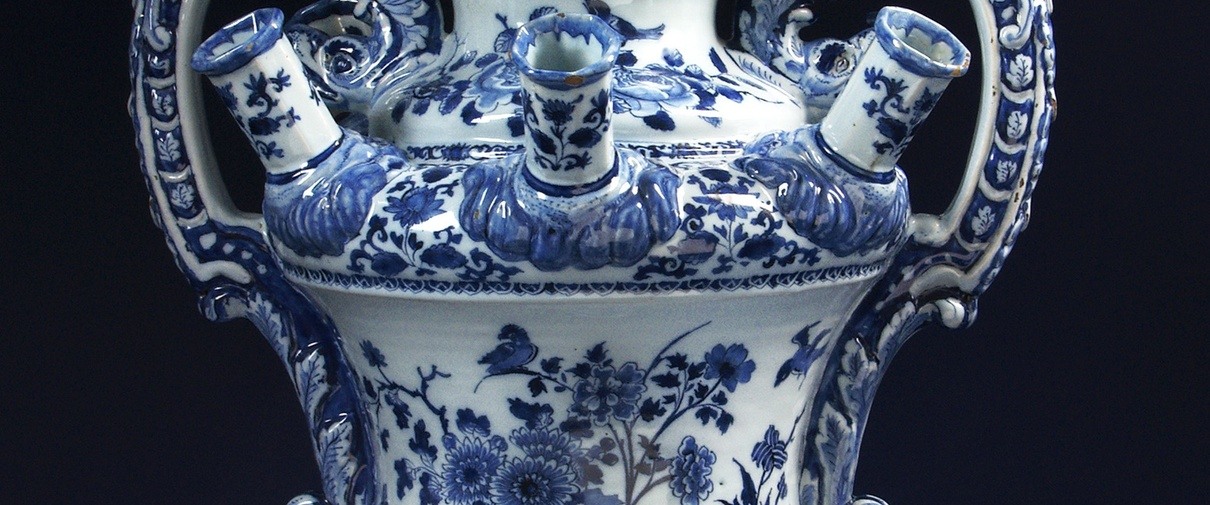Flower holder, approx. 1690, De Metaale Pot, Delft, earthenware, h. 61 cm, on loan from Ottema-Kingma Stichting, made possible by the Rembrandt Society.
Flower holders in all shapes and sizes were made in this period by the Delftware factories De Grieksche A, De Drie Vergulde Astonnekes and De Metaale Pot. Mary II played an important role in their popularity. The flower holder from the Princessehof’s collection illustrated here was made at De Metaale Pot. It is often difficult to ascertain where a particular piece was produced. Fortunately, that is not the case with this object, because the letters ‘LC’ are on the base. These are the initials of Lambertus Cleffius, who owned De Metaale Pot from 1680 to 1691. This proves that this flower holder was made in this period.
In the seventeenth century, blue-and-white porcelain from China became enormously popular. VOC (Dutch East India Company) ships transported huge quantities of it to the Netherlands. The potters in Delft nimbly jumped onto the bandwagon and copied the Chinese motifs on their own wares. The birds and stylised rocks on the belly of this flower holder and the cloud motif low down on the foot are good examples of this. The tulips on the cover are also a motif characteristic of Chinese porcelain from the late Ming dynasty, which ended in 1644.
Only a few of these flower holders are known in Dutch collections. It is also remarkable that Lambertus Cleffius’ mark appears on the holder. The first flower holders were probably made around 1670, which makes the Princessehof example an early specimen.
Not only tulips
Seventeenth- and eighteenth-century flower holders are often called tulip vases, but that is actually a misnomer. Sometimes they are also associated with the tulip mania, when the prices of tulip bulbs skyrocketed to unprecedented heights. However, this boom in the tulip trade occurred 50 years before the emergence of the first Delft flower holders. These spouted vases dating from the time of William and Mary were certainly not only used for tulips, but for all kinds of colourful flowers.
Eline van den Berg, curator Asian ceramics at the Princessehof National Museum of Ceramics.
